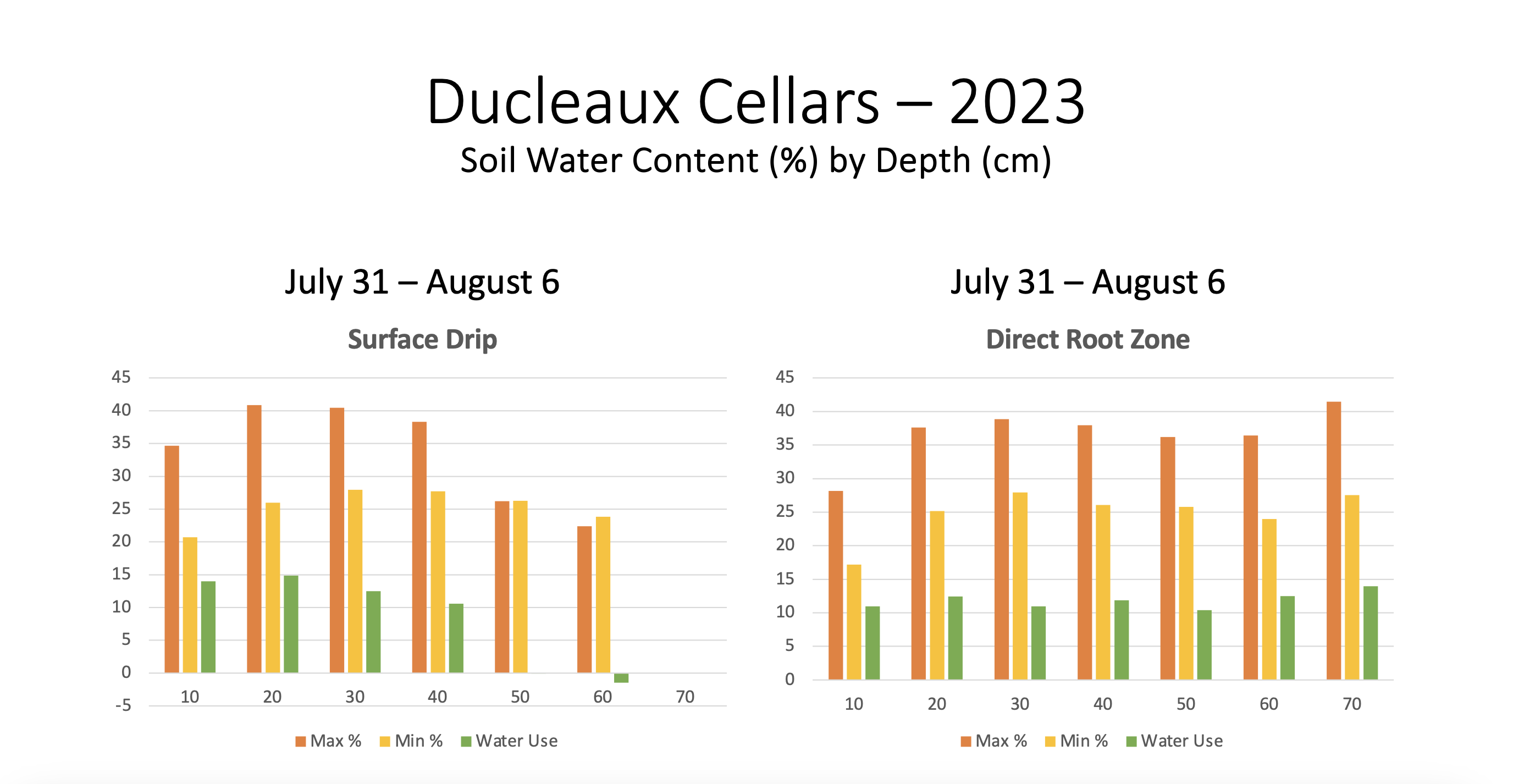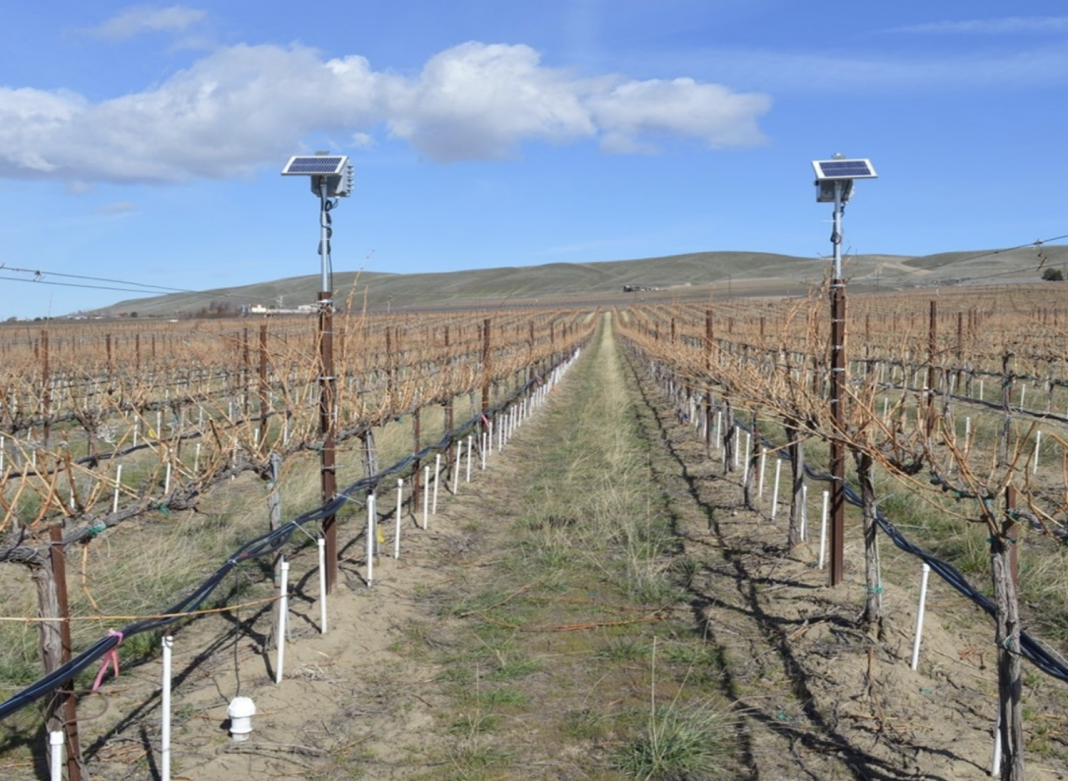Professor Pete W. Jacoby, from Washington State University, walks us through enhancing irrigation effectiveness in vineyards with innovative technologies like automated irrigation
As growers worldwide struggle to sustain vineyard production during hot summer temperatures and limited water resources, emerging technologies in the form of electronic soil moisture sensors coupled with automated irrigation may provide some opportunities for consideration.
Using soil moisture sensors can aid in irrigation scheduling to sustain crops such as wine grapes to avoid heat damage to vines and impacts on fruit yield ahead of visual effects on the vine.
Enhancing irrigation scheduling with automation
An emerging technology that integrates sensors with electronically controlled pumps and valves can also enhance irrigation efficiency by maintaining a more constant soil water content to satisfy the plant’s needs in real time. This automated irrigation system uses more frequent applications of water to hold soil moisture content within a pre-set range at a specific depth within the soil profile.
Current research indicates this system may use less water versus periodic irrigation applications of longer duration applied over longer time intervals throughout the growing season. Studies are being conducted to determine whether this strategy can enhance the use of deficit irrigation for the dual benefit of water conservation and improved fruit quality.
Sensor-driven decision aids
A research project using this technology is being undertaken to Syrah winegrapes in the Walla Walla AVA (American Viticulture Area). Soil water content is continuously recorded at 12 incremental depths of 10 cm at eight sites in the vineyard using SENTEK™ electronic capacitance probes. A single probe is designated as the sentinel location for activating an AutoWATERTM irrigation system provided by Tuctronics, Inc. in Walla Walla, WA.
All data is transmitted by cellphone telemetry to a cloud server maintained by Tuctronics, Inc. Irrigation is activated automatically when the moisture content reaches a specific lower water content. The irrigation is applied for a particular length of time, which can be adjusted manually to longer or shorter run times to accommodate changing weather conditions.

Soil water content versus soil water availability
Additional research sites are being planned to assess the use of this technology across a range of locales having differing soils and climatic growing conditions. Soils vary in content of sand, silt, clay, and organic matter, all of which influence water availability in the soil for plant use. Soil water content alone may not allow data from one locale to apply to another.
An additional type of electronic sensor (tensiometer) is used to monitor soil water availability. The research project described above includes an array of 3 tensiometers placed at depths of 25, 46, and 66 cm near each moisture content probe. Tensiometers should allow for comparison of treatment effects among the various sites and could also be used to activate AutoWATER™.
Enhancing irrigation delivery methods
Two systems of irrigation delivery, surface drip, and DZR™ (Direct Root Zone) subsurface drip, are being monitored at this site. Figure 1 displays the change in soil water content during one week at the Ducleaux Cellars study site, comparing these two delivery methods.
Orange-colored bars represent soil water content after the irrigation event, while yellow bars represent soil water content at the time just before the next irrigation event begins. Green bars represent the difference in soil water content between the two and is labeled “water use.” In actuality, the green bar includes both water absorption by vine roots and soil water loss to evaporation, gravitational outflow, and use by competitive non-crop vegetation (weeds).
Under surface drip delivery, water spreads across the soil surface, allowing for some evaporation to the atmosphere and more use by non-crop vegetation than occurs under the DRZ subsurface, which delivers the water through a plastic tube to a release point 60 cm below the soil surface. Once released into the soil, water can move by soil capillary action in all directions, both laterally and vertically.
Typically, under surface drip, most vine root biomass is found within the upper 45-60 cm. By contrast, DRZ delivery results in more root biomass below the point of water delivery. This difference in root distribution under DRZ drip irrigation may contribute to more vine resilience during drought periods. The figure displays DRZ as having more uniform water use within the measured depths displayed. [Figure 1]
Irrigation in vineyards summary
All of these technological advancements are now being evaluated as options for use by growers of winegrapes in regions of the world that experience periods of drought and water shortages.
This research is funded jointly by the Washington Grape and Wine Research Program and the Northwest Center for Small Fruit Research in cooperation with Ducleaux Cellars in Milton- Freewater, Oregon.

This work is licensed under Creative Commons Attribution-NonCommercial-NoDerivatives 4.0 International.


